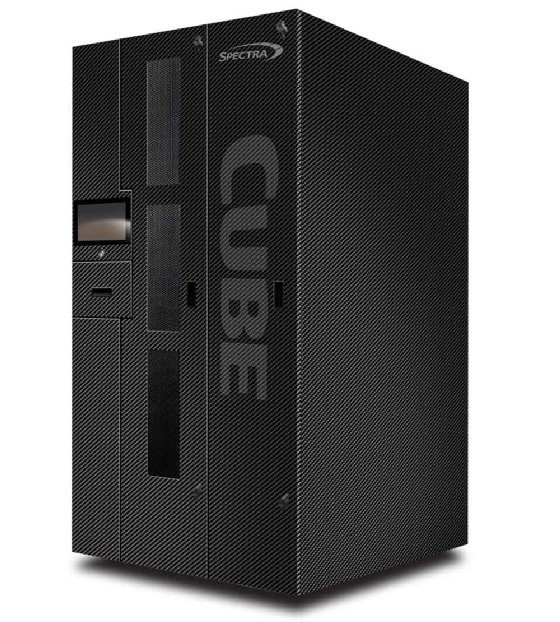
Getty Images
Spectra Logic introduces new tape library, OS
After more than 14 years, Spectra Logic is making changes to its long-running tape library and underlying OS. It's also unveiling a new tape offering to add to its portfolio.
Spectra Logic is updating its flagship tape library and introducing a smaller, easy to deploy tape library. Both tape libraries come with a new operating system.
Spectra Logic's TFinity Plus enterprise library, the latest version of its long-running TFinity Exascale, adds a new control module and touchscreen along with a new operating system, LumOS. The update modernizes Spectra's tape library, which has been in operation since 2009, and provides better task management performance to include capabilities such as partition creation, log gathering and health metrics accessibility. Spectra has also introduced the Spectra Cube tape library designed for quick deployment.
Once used for operational recovery, tape's role is evolving, which makes it necessary to modernize libraries so they can aid companies in better utilizing their data, according to Simon Robinson, an analyst at TechTarget's Enterprise Strategy Group. Today, tape is often used as a deeper archive, but this archive data can be used in a more active fashion with improvements in analysis.
"We're bringing this long tail of data [into modern times] and are now seeing potential business reasons why organizations might want to hang onto and use it in a more active fashion," he said.
Tape is inexpensive and more energy efficient compared with digital alternatives, making it attractive for data-hungry environments. It needs to be ready to be integrated through modernization, which is what Spectra is doing, Robinson said.
Making what's old new again
Spectra Logic TFinity tape library was first introduced and has been in use since 2009. Its operating system, BlueScale, was introduced on earlier tape libraries in 2004.
The TFinity Plus library has a modernized control module and now supports up to 168 drives over the previous 144 while still working with LTO, IBM TS11xx and Oracle T10000 media types. TFinity Plus can store up to 2.2 exabytes of uncompressed data with a throughput of 242 TB per hour. Older TFinity units are field-upgradeable to TFinity Plus, meaning the controller and screen can be swapped out and updated to the current model.
Tape libraries are still needed, and modernizing -- especially around management performance and capacity -- is good for customers, according to Marc Staimer, president of Dragon Slayer Consulting.
"While this is modernization of a very important product, this is more evolution than revolution," Staimer said, noting that performance and capacity improvements are welcome, but they're not significant enough to change the archive media market.
Along with the new libraries comes a new operating system. LumOS management software is built on a modern, extensible architecture that can improve library management tasks up to 20 times over the previous version. The latest version includes a new interface, multi-threaded operations for simultaneous task completion, partitioning for multi-tenant environments and capacity on demand.
"As new features become available, they can be more accessible to the user base," Robinson said.
Other features such as new REST APIs and media management software allow for the libraries to be more easily integrated into broader storage environments, he said.

Spectra Cube
Spectra also introduced the Spectra Cube, a new tape library that uses LumOS. The Cube is a standalone library designed for environments that don't have tape library expertise on hand. It can hold up to 30 PB of raw data and can be paired with Spectra Logic's BlackPearl file and object storage system or used with the vendor's Glacier-like on-premises service with S3 compatibility.
The Cube can come fully assembled so that users only need to add the media to use it, according to Spectra.
These days, many applications are written with S3 compatibility, which is becoming the de facto standard, Robinson said. Organizations that use the public cloud for archiving now have another option with the Cube.
"It's a hybrid world," Robinson said. "Some organizations are going to have a subset of their archive data in an on-premises environment."
Adam Armstrong is a TechTarget Editorial news writer covering file and block storage hardware, and private clouds. He previously worked at StorageReview.com.






